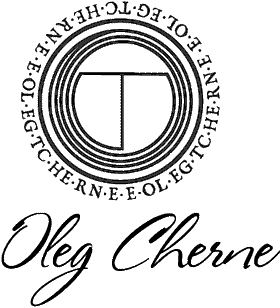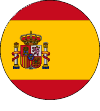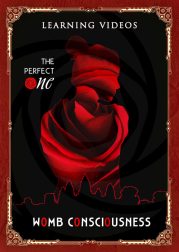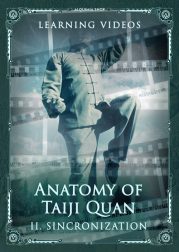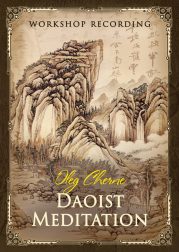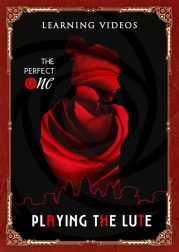The Churning of the Ocean of Milk. Samudra Manthan
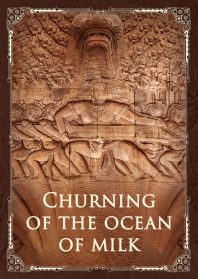
The Churning of the Ocean of Milk (Samudra Manthan) carries the deepest knowledge of yoga, tantra and alchemy. This phenomenon finds expression in the Apsara dance. The churning of the Ocean of Milk is associated with the creation of the sacred vessel kumbha inside the body, which is filled with life-giving force, with amrita.
We find knowledge about the churning of the Ocean of Milk in the Bhagavata Purana, Vishnu Purana, and Shiva Purana. This knowledge of creation and transformation lays the foundations of Indian alchemy.
Indian alchemy is therefore a multi-level concept that underlies yoga, Shaktism, tantra, and rasayana. It was deeply influenced by them and, through these changes, absorbed some of the rules and regulations that lead to the ideas of liberation and transformation.
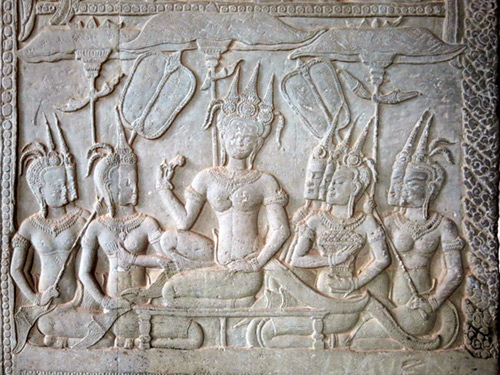
In general, Indian alchemy is a synthetic phenomenon that has absorbed, among other things, the classical ideas of Taoist alchemy, as well as Himalayan and Tibetan alchemy. It has even experienced the influence of Khmer alchemy, with its concept of transformation (instead of pure liberation), which is reflected in the image of the Churning of the Heavenly, or the Milky Ocean (Samudra Manthan).
This process helps to awaken the energy of Śakti (Shakti), which requires that we get amrita (the heavenly breath) and produce soma (the immortal nectar). To a certain degree, it is Khmer alchemy (which considers the churning process as alchemical, and not just as an act of world creation) that provides us with knowledge about the original Indian alchemy.
Therefore, the Soma nectar is not just a drink of the gods, granting supernatural power or immortality, it is an entire process related to obtaining amrita. Note that ‘obtaining amrita’ here refers to internal breathing, while Soma refers to internal nutrition. The Puranas and the Mahabharata allegorically describe this process as a struggle between higher and lower emotional fields. What is important here however, is that we learn to control this process, and not just observe it. Note that the process itself is represented by the action of the serpent Sheshu (Vasuki). The awakened force begins to accumulate in the vessel (the shell of the tortoise Kurma). As a result, the axis is fixed and its rotation initiates the churning process, an alchemical process that produces a special state: the state of Varuni.
The alchemical process itself corresponds to the dance of the Apsaras, which forms and at the same time rests on the inner conch shell (Shankha). What follows is a deepening of the process (Sharnga), the ability to materialize (Surabhi) the alchemical grain of the Parijata and the jewel/mineral (pills) Kaustubha. Once we have built the foundation for the immortal body, we start the process of its cultivation which involves the important concepts of soma and amrita.
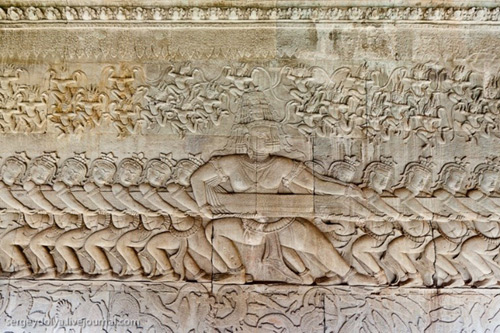
Thus, the churning of the Milky Ocean is a special metaphysical process that has a heavenly and earthly nature. Its heavenly nature is manifested when the Heavens or the macrocosm produces energy for the nourishment of higher beings, the gods. However, there is a class of beings in Heaven (let’s call them demigods) who also need the coarser amrita produced on Earth. This amrita is also used by those on Earth who want to reach a higher form of existence.
The implementation of the churning process requires that certain conditions are met, and this is represented by the struggle of the asuras, carriers of the Earthly life force, with the devas, carriers of the Heavenly life force. In fact, this technological process is associated with place, time, knowledge and, of course, the presence of a certain class of people who have access to the highest forms of energy on Earth. These people can produce amrita, they can create a laboratory for producing it, like Angkor Wat, and they also know how to consume it.
So, churning the Ocean of Milk is the process of obtaining amrita. Amrita is a special drink of immortality, which is associated with the nature of breathing. Here air is perceived as a drink, which must be properly drunk or inhaled. Note that this is different from the Greek ambrosia (which involves a mineralization process and is absorbed by the whole body) or soma (which is just a liquid, a drink).
Khmer noses are exceptional, as Khmers perceived breathing as an ecstatic state that gave them supernatural power.
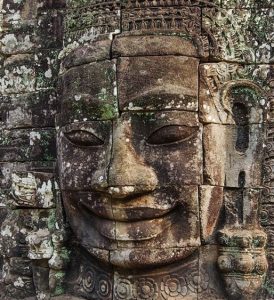
To obtain amrita we need to make Heaven and Earth resonate, which means we need to activate the Heaven-Earth axis – say, the connection points of the constellation Draco and Angkor Wat. This ethereal essence is represented by the concept of the world tree (for example, Boddhi), which can be found in the Ta-Prom temple, where giant banyan trees grow.
Amrita is a life-giving essence that can revitalize, transform, or lead to enlightenment. Naturally, the place here is important too: if the place does not provide the extract, then it is believed that the extract is being guarded by a terrible serpent (such as the serpent Apep, guarding the life-giving essence of Heaven).
In ancient times, in these places for obtaining amrita, cities were formed, such as Thebes, which was originally called No-Ammon in honour of the hidden god of the Sky, or rather in honour of Heavenly amrita. The pyramids at Giza, which are also associated with the activity of the constellation Draco, were containers for amrita. The same was done at Angkor Wat.
In Greek mythology, the amrita, which Hercules obtained in his eleventh feat, was guarded by the dragon Ladon. Note that this was in fact ambrosia, i.e. distilled and aged amrita, which people could obtain on Earth, and could even communicated with it. A typical example is the serpent Python, who guarded a cave with distilled amrita, that is, ambrosia, which transformed him into the oracle Pythia. That is, the oracle was connected with Heaven, so those who turned to the prophet Pythia, in fact, communicated with the constellation, with Heaven.
According to the Greek myths, this essence was also given to the legendary Cadmus, the son of the Phoenician king. It was also used by the Atlanteans, the unique ancient warriors the Spartans, and the Khmers. In the Orphic story of the Argonauts, they also obtained the essence, which was stored in Colchis – in the Golden Fleece hung on a tree. In fact, it was consumed by everyone on Olympus, the place where the heavenly nectar of Amrita came, and where the gods organised their feasts.
Note that whereas in Heaven the production of amrita was associated with the image of the dragon, representing a distilled spiral of the nebula (in ancient times it was perceived as a certain pressure that required tuning), on Earth amrita was produced by the asuras and devas, represented by a certain class of people (like the Khmers who carried the energy of the devas and asuras). Note also that this alchemical process should occur within the body, and not outside it. Connecting the body is also an act of churning (another name for alchemy) that helps the person acquire siddhis (special powers).
Twelve conditions for obtaining amrita
The churning of the Ocean of Milk (Samudra Manthan) has twelve levels. Each level can be completed in one year, and after twelve years one can drink a sip of amrita. The special holiday of Kumbh Mela is dedicated to this special event. What is particularly important in the churning of the Milky Ocean are the apsaras – the perfect women who can preserve the amrita produced by the devas and asuras. A special place is also needed, a place for god Vishnu, who can maintain the place of churning.
The twelve conditions for obtaining amrita constitute an entire process called the appearance of Dhanvantari (the god of healing) with the drink of immortality.
- The churning process must take place around Mount Meru. This is a place that allows you to connect Heaven and Earth, which is understood as the growth of the Parijata tree, it also requires the Apsara dance.
- Creating the setting for the churning, symbolized by the appearance of the horse Uchchaihshravas.
- Obtaining a body capable of receiving amrita. This body is associated with the goddess of prosperity Lakshmi, represented by the dancing apsaras.
- The ability to absorb amrita, inhale it, twist it into yourself, which is symbolized by the Shankha conch shell.
- The ability to taste, absorb and attain an ecstatic state, following the laws of the goddess of ecstatic tasting Varuni.
- The ability to cultivate amrita and use its power to generate and nourish the flower of Parijata.
- Creating the cinnabar, the sapphire-coloured gemstones Kaustubha-mani and Padmaraga-mani.
- Maintaining amrita with the Ocean of Milk, with the breath, which is symbolized by the sacred cow Surabhi.
- Maintaining the rhythm of breathing to achieve true depth – the seven-headed flying horse Uchchaihshravas.
- Crystallization of amrita in the chest is associated with the growth of the magical Kaustubha stone.
- Formation of a magical body (like the heavenly tree Kalpa-Vriksha).
- Maintaining the support for the Sky, symbolized by the king of elephants Airavata.
It is also important that the process of Churning the Ocean of Milk also nourishes the heaven, as the frequencies of Apsaras and Devas change.
